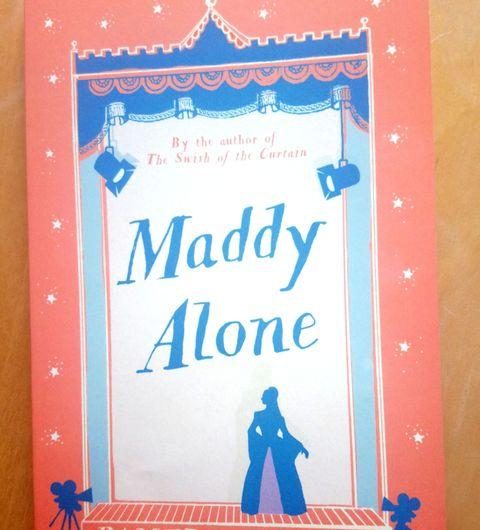Pushkin Press is one of my favourite publishers, as regular readers of my reviews know. Thanks to them I have read such gems like The Letter for the King by Tongke Dragt, and The Beggar and Other Stories by Gaito Gazdanov. So, I was delighted when they kindly sent me the children’s classic Maddy Alone by Pamela Brown for a review.
Maddy Alone is the second book in The Blue Door series and the sequel to The Swish of the Curtain, which was immensely popular and has even been made into a television series. Although a sequel, Maddy Alone is fairly easy to read as a standalone novel.
The book at hand begins with the 12-year-old Maddy moping because she has learnt that her friends from the Blue Door Theater Company are busy in London with drama school and wouldn’t be able to return home for the upcoming summer holidays. Maddy sulks because not only is she left behind but she also has to work on her mathematics. But she happens to meet Rodney, an older boy, who is a musician on the sets of a new film being shot in her village Fenchester. Rodney takes her to the set, and from there the story begins to turn in Maddy’s favour.
Pamela Brown was a teenager when she wrote the Blue Door series, and perhaps that’s why the language echoes teenage angst most authentically. Maddy’s moods, her tantrums, and her perpetual hunger for sticky buns are all pitch perfect. But this book is not all about teenage whimsy. There are some slightly thoughtful passages that I particularly enjoyed like Maddy’s conversation with the bishop in the beginning.
“Sandra’s written and told me about what they are doing. They have dancing and fencing and voice production – absolutely everything they’ve always wanted to learn.”
“But don’t you see,” put the bishop, “they’ve had to wait for all the things they’ve got, just as you are waiting.”
Maddy might seem wilful, headstrong, and even annoying at times but we have to read it from a child’s perspective, shedding the heightened awareness that we have right now as adults. Take a Benjamin Button-like ride back to childhood and that’s when we really begin to savour the book.
Above all, I relished the little details that are singular to Britain in the 1940s. The dresses, the hats, the language, and even some of the objects (a radiogram!) carry the joy of nostalgia, and is a delight to read about. I cannot wait to read The Swish of the Curtain, and the next two books in the series. Thank you again to Pushkin Press!



